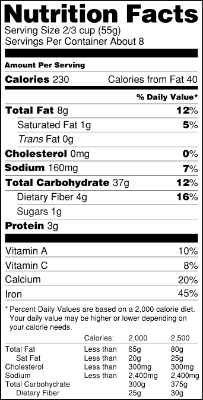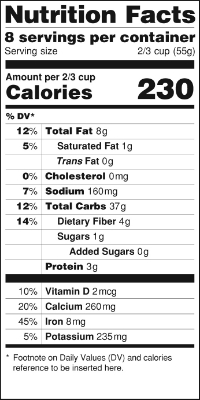Check the label!
Mario Moore
First lady Michelle Obama sharing excitement about the new Nutrition Facts labels, 2014
On Friday, May 20th, first lady Michelle Obama announced the release of the new Nutrition Facts Label for packaged foods. At the event she joked that “very soon you will no longer need a microscope, a calculator or a degree in nutrition to figure out whether the food you’re buying is actually good for our kids.” According to the United States Food and Drug Administration's (FDA), conversations about the change began about two years ago, more than 20 years after the last round of changes. The FDA hopes the new label is easier to read and highlights what consumers need to know.
It seems that with these new changes, the FDA might be able to shift our attention to areas where we need the most help. Some of the key changes include-- increasing the size of the calories to make them more visible; adjusting serving size to reflect more realistic portions; adding a per-package column for some products in case you get carried away; highlighting added sugar to help determine how much “natural” sugar is in a product; focusing on the types of fat rather than the amount in calories; and adding Vitamin D and Potassium since most Americans aren’t getting enough in their diets.
Although these changes appear to be great for consumers, the FDA is getting some major push-back from the food industry; namely the sugar industry who are worried for their products which may be painted in the wrong light by these new changes. They fear that the new labels will be too telling. Too much truth, they say! Well they didn't quite say that but that’s what I’m hearing. Most companies have the next two years to update their labels, so we’ll see how loud they squeal as they figure out how to make their products look less telling.
Connecting it back: Decoding the label
“Great, the Nutrition Facts label is changing...but B, I didn’t know what I was looking at in the first place.”
No matter where you are on the spectrum, you are not alone. More than 77% of Americans are checking out the Nutrition facts label. Here are some things to think about no matter which version of the label you are checking out:
Serving Size and Calories: It’s recommended that we eat around 2000 calories per day. If that Big Mac puts you 25% of the way towards your daily limit, imagine what happens when you add fries and a drink. Be mindful that there might multiple servings in a given package which means you might have to multiply the figures on the label.
Types of Fat: We need fat in our diet so looking solely at the Total Fat doesn’t paint a complete picture. Look for unsaturated fats found in nuts, seeds, and vegetable oils. Limit saturated fats found in dairy products, meats and unhealthy desserts. Avoid trans fats!
Limit sodium and sugar: We know that excess sodium and sugar cause health issues, but food manufacturers know they’ve got us hooked. Look at Total Carbohydrates and the ingredients list to understand the sugar in the package. Total Carbohydrates are made up of healthy fiber, sugar (both natural and added) and sugar alcohols. You want that fiber to be high and the sugars to be low. Also, if sugar or one of its 50 names is near the top of the ingredients list, that is probably not the most healthy product. Use the Percent Daily Value to help determine a healthy sodium level; Sodium- (low) less than 5%, (high) more than 25%.
- Pack in those vitamins and other nutrients: Don’t glance over the bottom of the label. Vitamins and minerals are essential for proper function and good health in general. Change up your products to ensure you are good all the nutrients you need.
Eat to live. Live to be.
Best,



